
The truth about plastic
shifter balls.
Your BMW deserves better!
One of the important upgrades that UUC makes to the
BMW shifter assembly is the change from a plastic shifter ball to an
integrally-machined steel pivot ball.
The advantages of the steel ball are numerous:
| FEATURE: |
STEEL |
PLASTIC |
|
"Perfect" sphere shape
|
Steel ball is machined to exacting standards,
perfectly spheroid. |
Plastic casting deforms as it cools, becoming
ovoid or flat-edged. Casting marks will always include lines,
ridges, flat areas, and injection-point pimples or dimples. |
|
Durability
|
As the pivot ball wears from normal use, steel
becomes polished and even smoother. |
Plastic becomes rougher and is damaged by grit
and other contaminants that enter the pivot bushing area. |
|
Strength
|
The integrally-machined steel ball can never
become loose, rotate, or vibrate. |
Plastic balls can become brittle with age and
break, or get loose and wiggle. |
Why does BMW use plastic shifter balls? The
answer is obvious: cost. It's cheaper to make a solid rod and slip a plastic ball onto it than make an entire metal
assembly. Actually, we know that the plastic ball shifter was not
always used by BMW; they started appearing in various models around the
early 1990s, along with a wave of other cost-cutting measures. Previous
to that, BMW used steel-ball shifters in all models. In fact, it was not until the less-expensive plastic-ball shifters
appeared that we started to hear about BMW shifters failing, actually
breaking under hard use.
The
typical degeneration of the
plastic-ball shifter:
BRAND-NEW

All nice and pretty, very smooth! That is, until we look
closely...
CASTING MARKS
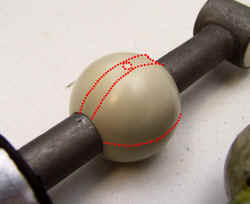
Dotted lines show seam on side, flat area all along other
side, and casting flash.
TIMELINE
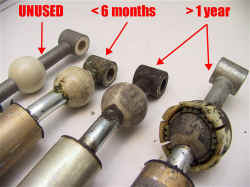
New shifter shown on left, used shifters as removed from BMWs of
various ages.
Shifter on far right is still wearing the nylon cup bushing. Note
the eight "fingers" that grab the shifter, and the slots in between
that let in grit and debris. The specific wear characteristics of
this become obvious.
CLEAN DOES NOT LOOK ANY BETTER...
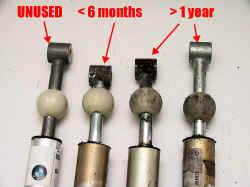
All used shifters cleaned with de-greaser and wiped free of debris.
Note the year-old shifters with distinctive wear pattern from nylon cup
bushing.
NOT A GOOD START...
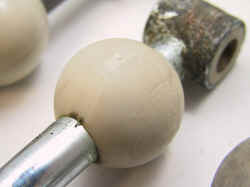
After only 6 short months of driving, wear is already evident.
ONE YEAR OLD:
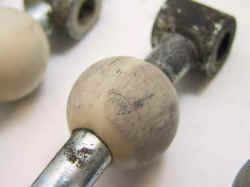
At one year, roughness that is noticeable to the driver is
present.
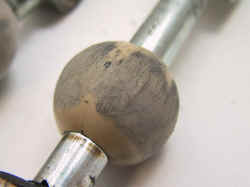
Wear pattern exactly matches "fingers" of nylon cup
bushing.
Point by point documentation.
 WHAT ABOUT OTHER
AFTERMARKET SHIFTERS?
WHAT ABOUT OTHER
AFTERMARKET SHIFTERS?

Non-UUC brand that uses a steel ball is a good example of
the wear that occurs. This shifter was electroplated in a gold
color... note that this has worn off at the pivot ball. Wear
simply happens in any component that moves in contact with another
component, but how the material holds up is the key to longevity and
continued smooth operation.
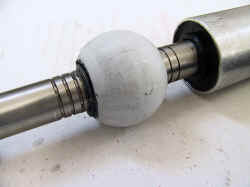
Another plastic ball. Compare identical wear
patterns to factory shifters.
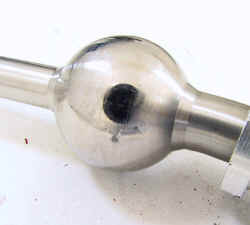
UUC integrally-machined steel ball after about 10K-15K miles. Note
the mirror-polishing in the wear zone... look closely enough, you can
read the brand name of the camera in the reflection.
© 2004-2011 UUC Motorwerks
